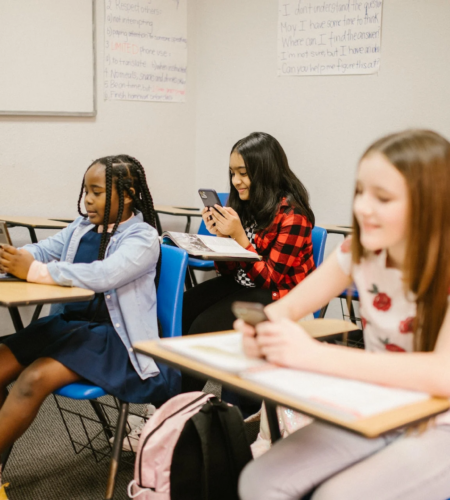(Image Credit: iStock)
As schools kick off a new academic year, a significant shift is occurring in how they handle student cellphone use. Across the United States, educators and lawmakers are increasingly recognizing the need to address the distractions and potential misuse associated with smartphones in the classroom. From Indiana to Louisiana, new laws and school policies are emerging, aiming to curb the ever-present challenge of cellphone distractions. But what’s driving this wave of change, and how effective are these measures likely to be?
The Smartphone Distraction Dilemma
Cell phones have become an integral part of daily life for students, but their presence in classrooms has raised serious concerns. According to a recent Pew Research survey, more than 70% of high school teachers believe that student cellphone use is a major distraction. This isn’t just about students sneaking peeks at social media during lessons. The issue extends to cyberbullying, inappropriate content sharing, and even the use of phones to record and disseminate videos of bullying or fights.
The prevalence of apps like Snapchat, TikTok, and Instagram has exacerbated these problems, making it easier for students to be distracted and engage in negative behaviors. Recognizing these issues, states are taking action to address the problem, but enforcing cellphone bans presents its own set of challenges.
The Legislative Push for Change
This year, a growing number of states have implemented or proposed new regulations to limit cellphone use during school hours. These laws reflect a bipartisan effort to tackle the problem from a legislative perspective. States like Indiana and Louisiana are at the forefront, passing measures designed to curb phone use and minimize distractions.
For instance, Florida has taken a bold step by passing a law that prohibits the use of personal wireless devices, including smartphones, during class. This law extends beyond just the classroom, barring the use of phones throughout the entire school day and restricting access to social media platforms on school Wi-Fi. The measure even specifies prohibitions on apps like TikTok on school-issued devices, though it does allow for educational use when expressly directed by teachers.

Challenges of Implementation
While these new regulations aim to address the problems associated with cellphone use, they also bring challenges. One of the main issues is enforcement. Without a consistent schoolwide policy, teachers may struggle to manage cellphone use effectively in their classrooms. Some schools are requiring students to place their phones in lockers or designated areas, but this approach can be cumbersome and difficult to monitor.
Moreover, cellphone bans might not address the broader issue of technology in the classroom. Many students use school-issued laptops and tablets, which can also be sources of distraction. Studies have shown that laptop use in classrooms, like cell phones, can negatively impact student learning if not managed properly. This raises questions about whether banning cell phones alone will have a lasting effect on improving focus and reducing distractions.
The Impact of Phone Bans
Evidence suggests that cellphone bans can have a positive impact on students’ concentration and behavior. Teachers report that when phones are not allowed in the classroom, students are better able to engage with lessons and collaborate with their peers. Some schools have observed a decrease in phone-related bullying and conflicts since implementing these bans.
However, the effectiveness of these measures may vary. While phone bans can help in managing distractions, they may not fully address the issue of technology misuse. The challenge lies in finding a balanced approach that promotes effective learning while acknowledging the role of technology in modern education.
Looking Beyond the Ban
The conversation around cellphone use in schools is part of a broader discussion about technology and education. As technology continues to evolve, schools must navigate the complexities of integrating digital tools in a way that enhances learning without compromising focus and behavior. Finding this balance is crucial for creating an educational environment where technology serves as an aid rather than a hindrance.
By addressing the distraction caused by cell phones and exploring comprehensive solutions, schools are taking important steps toward fostering a more focused and respectful learning environment. Whether these measures will result in lasting improvements remains to be seen, but they highlight a growing recognition of the need to adapt educational practices in the digital age.


